#Saint Columba
Text

Researchers and monster hunters are gathering in the United Kingdom's Scottish Highlands this weekend to look for the eternally elusive Loch Ness Monster, the biggest search for the legendary beast in more than 50 years.
Somewhere beneath the shimmering surface of Loch Ness lies Nessie, the legendary sea beast whose reputation spans nearly 1,500 years — at least, that's what monster hunters and Nessie enthusiasts from around the world hope to prove Saturday and Sunday.
The Loch Ness Centre and the research group Loch Ness Exploration are asking all aspiring monster hunters to join in on the biggest search since 1972.
"Our purpose is to observe, record and study the natural behaviour of the Loch and phenomena that may be more challenging to explain," the Loch Ness Exploration Facebook page reads.
"If you believe that the Loch Ness Monster exists then we invite you to join the search, we equally invite you to support the study of the Loch and the natural behaviour of the elements that may be the root cause of these strange reports from Loch Ness."
Investigators are breaking out all sorts of technology, including surveying equipment the Loch Ness Centre says has never been used on the freshwater lake before.
Drones with infrared cameras will fly over the lake and a hydrophone will be used under the surface to detect "Nessie-like calls," the Centre says.
Volunteers will also participate in a large surface watch of the loch, scanning the surface for any irregularities.
However, due to an "overwhelming demand" from enthusiasts, the group is no longer accepting applicants hoping to participate in person.
But the Loch Ness Centre says those still eager to participate can do so virtually through a livestream.
At 22 square miles and with a maximum depth of 788 feet, Loch Ness is Great Britain's largest lake by volume and second-largest by surface area, according to Encyclopedia Britannica.
Though the first written accounts of a monster are attributed to the Irish monk Saint Columba's encounter in 565 A.D., reports of a creature in the lake are depicted in ancient stone carvings found in the area.
But the legend of a monster lurking in the loch didn't garner greater attention until April of 1933, when a couple driving along the newly built road around the lake saw an animal they compared to a "dragon or prehistoric monster," according to the Scottish Maritime Museum.
More sightings soon followed, and big game hunter Marmaduke Wetherell was commissioned to track the monster down in December of 1933.
He said he found large tracks along the shoreline, but zoologists at the Natural History Museum debunked the tracks.
The following year was when English physician Robert Wilson took a photo, now known as the "Surgeon's Photograph," which appeared to show Nessie's head atop a long slender neck poking out of the water.
The picture was printed in the Daily Mail and the Loch Ness Monster was thrust into international stardom.
One of the participants in that search confessed on his deathbed that the picture was staged, according to the Daily Mail.
The Loch Ness Centre says there have been more than 1,140 official Nessie sightings.
Paul Nixon, the Centre's general manager, said he's excited to see what turns up after the waters are searched like never before over weekend.
"We are guardians of this unique story," Nixon said.
"And as well as investing in creating an unforgettable experience for visitors, we are committed to helping continue the search and unveil the mysteries that lie underneath the waters of the famous Loch."
#Loch Ness Monster#Scottish Highlands#Loch Ness#Nessie#Loch Ness Centre#Loch Ness Exploration#Saint Columba#Scottish Maritime Museum#Marmaduke Wetherell#Natural History Museum#Robert Wilson#Surgeon's Photograph#Daily Mail#Paul Nixon
62 notes
·
View notes
Text
A Twelfth Century Poem, Attributed to Saint Colmcille

What pleasure to be enclosed on an island
high on a rock
where I may reflect on the sea
in all its moods.
Where I may see the great waves
shining, bright, and cheerful,
singing their music to their Father
on their perpetual course.
That I may see the even bright-edged strand
no gloomy view;
that I may hear the song of the wonderful birds
a joyous prayer.
That I may hear the crash of the mighty waves
against the rock,
the roar of the sea
crying out near the churchyard.
That I may watch the soaring flocks of birds
over the fullness of the sea;
that I might see its mighty whales,
greatest of wonders.
That I might watch the ebb and tide
and on its course, that it may take
my name and the secret that I whisper
back to Ireland.
That contrition of heart would come to me
in contemplation,
that I may lament my sins,
so difficult to declare.
That I may bless the Creator
who rules all things:
heaven, with its pure order of angels,
earth, sea… everything.
That I may meditate with one of my books
for the good of my soul;
a while at Adoration of beloved heaven;
a while at psalms.
A while gathering seaweed from the rocks;
a while fishing;
a while giving food to the poor;
a while in my cell.
Time to pray for the kingdom of heaven,
for our salvation…
A labor not too hard!
That would be pleasant.
translated by Bob Willoughby and John Caball, found in Voices From Ancient Ireland: A Book of Early Irish Poetry.
#Christianity#Catholicism#Celtic Catholicism#sea#Scotland#poem#nature#prayer#meditation#beauty#simplicity#charity#Saint Columba#peregrinatio
6 notes
·
View notes
Text

In the upper left we have the TDG Junior's first appearance all together. From last page we have Angel and Drake, and joining them are Pascal and Mary. And it seems their chaperone might be snoozing on the job.
The rest of the page (stitched together out of two) is a design process for Nessie. The main aspects across all of them are the fire breath from Saint Columba's monster and external nares. I have no idea where I first saw these but I was apparently obsessed with them, because Nessie and some older designs for fire giants also have them. The wide one in the right corner is my favorite.
#doodles#sketches#traditional art#loch ness monster#nessie#saint columba#creature design#myth stuff#drake#angel brown#pascal#mary
2 notes
·
View notes
Text
#christianity#Holy Grail#Missing years of Jesus#Joseph of Arimathea#King Arthur#Glastonbury#Holy Thorn#Pelagius#Saint Patrick#Saint Columba#Saint Brendan#Saint Brigid#King Ina#12 Hides of Glastonbury#reincarnation#John the Baptist reincarnation of Elijah?
0 notes
Photo
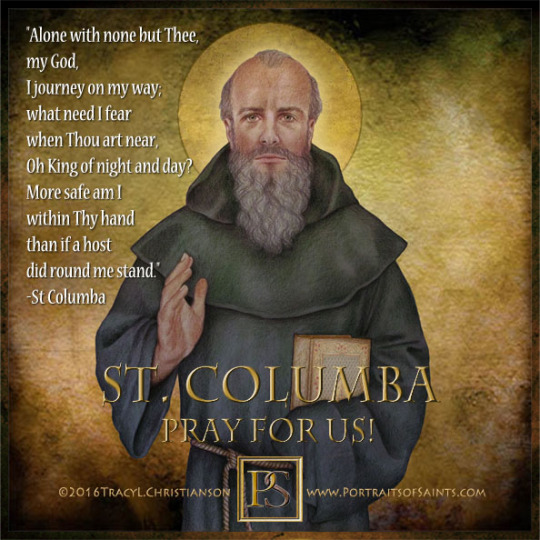
Saint Columba
521-597
Feast day: June 9
Patronage: Ireland, Scotland, Derry, bookbinders, poets, floods
Saint Columba was born in Ireland of royal descent. He studied for the priesthood under many prominent churchmen, including St. Finnian, eventually becoming abbot. In 563, he sailed to Scotland evangelizing the pagans and establishing monasteries, including the abbey on Iona. Saint Columba is considered one of Irelands 12 Apostles loved by both the Irish and Scots.
Prints, plaques & holy cards available for purchase here: (website)
82 notes
·
View notes
Text

More Saints of the Day October 03
St. Ewald & Ewald
St. Adalgott
St. Candidus
Bl. Columba Marmion
St. Cyprian of Toulon
St. Ebontius
Sts. Ewald the Dark and Ewald the Fair
St. Gerard of Brogne
St. Hesychius
St. Maximian
St. Menna
St. Mother Theodore Guerin
St. Widradus
7 notes
·
View notes
Note
Okay, since we’re talking about St. Patrick and St. Gertrude, I gotta nominate my man St Ailbe.
This man is the patron saint of wolves, which automatically makes him a badass.
He was raised by a she-wolf growing up, and later defended that same she-wolf when he was man. He also raised her pups.
He predates St. Patrick, making him much closer to Celtic Catholicism than other saints.
He has his own church in Emly (which he supposedly built)
Some sources also say he baptized St David aka the patron saint of Wales, making him a big deal.
In conclusion: The Patron Saint of Wolves deserves recognition.
Also, St. Columba cannot be left out of the Irish Apostles.
ahhhh I would have loved to have included St Ailbe and St Columba (Columba was actually on the list) but the pre-schism bracket is almost over!!
Think of new saints for the post-schism, modern, and beatified brackets!
8 notes
·
View notes
Text

St. Columba in Prayer, by angeltreasure.
13 notes
·
View notes
Text
#OTD in 597 – Death of St. Colomcille (meaning “Dove of the Church”), also known as St Columba.
#OTD in 597 – Death of St. Colomcille (meaning “Dove of the Church”), also known as St Columba.
St Colomcille was a missionary monk who, some of his advocates claim, introduced Christianity to the Picts during the Early Medieval Period. He was one of the Twelve Apostles of Ireland.
St Colomcille was born on 7 December ca. 521 A.D. to Fedhlimidh and Eithne of the Ui Neill clan in Gartan near Lough Gartan, Co Donegal. On his father’s side he was great-great-grandson of Niall of the Nine…
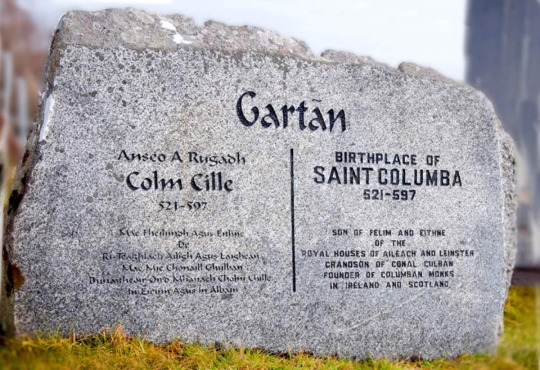
View On WordPress
#Battle of Cúl Dreimhne#Co. Down#Downpatrick#High King Dermott#Iona#Patron Saint of Derry#Scotland#St Brigid#St Comgall#St Molaisi of Devenish#St Patrick#St. Colomcille#St. Columba#St. Finnian#Twelve Apostle
11 notes
·
View notes
Text
Y'know how often kids are scared of monsters n stuff? Well when I was a kid I read a story that a friend wrote for school, about Saint Columba and the Loch Ness Monster. I only partially remember it, but the end I think I'll always remember.
"did you think the God who created that monster could not control it?"
And I've never been afraid of monsters since.
#this was also where I ACTUALLY became interested in cryptids and monsters and the unknown#when i understood that whether any of it is real or not id still be in God's hands#Saint Columba and the Loch Ness Monster#cryptids
3 notes
·
View notes
Text
SAINT OF THE DAY (June 9)
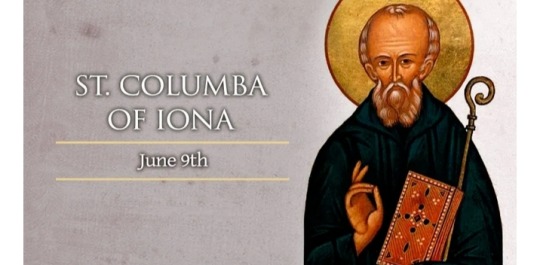
On June 9, the Catholic Church commemorates the sixth-century Irish monk and missionary Saint Columba of Iona, also known as St. Columcille.
One of Ireland's three patron saints, together with Saint Patrick and Saint Brigid, he is also sometimes called the “Apostle of the Picts” for his evangelization of Scotland.
He should not be confused with St. Columbanus (or Columban), a different Irish monk and missionary who lived slightly later and ended up in Italy.
Columba was born during 521, descended from royalty through his father. He was taught and mentored by the priest who baptized him and later attended a monastic school founded by Saint Finnian of Moville.
His own life as a monk began at the school, where he was also ordained a deacon.
The deacon went on to spend time in a different monastery and school run by another Finnian, Saint Finnian of Clonard.
Columba became a priest during this period, and along with eleven others from this same institution, he would become known as one of the “Twelve Apostles of Ireland.”
Columba also studied with Saint Mobhi of Glasnevin, before a disease epidemic forced him to return to his ancestral homeland of Ulster during 544.
He spent the next 15 years traveling, preaching, and founding monasteries.
It is not clear why, in 563, Columba left Ireland. By some accounts, he was simply going to preach the word of God.
Others claim that he had become involved in a battle between warring tribes, before repenting and taking on foreign missionary work as a penance.
On the island of Iona, located on Scotland’s northwest coast, Columba and his group of companions built simple monastic quarters and a church for themselves.
The priest-monk’s first missionary work was in the region of Dalriada, whose Celtic Christian inhabitants were lacking solid religious instruction.
His next effort was to convert the Picts of northern Scotland, a task that would take up most of the rest of his life.
He began by gaining entrance to the castle of King Brude, where the locked gates are said to have miraculously opened when the sign of the Cross was made.
The king welcomed the missionaries, believed the Gospel, and was baptized.
Columba’s evangelization of northern Scotland continued over the next three decades.
He and his companions met with some resistance from the native pagan Druids, but on the whole, they found remarkable success in spreading the Catholic faith and building up a network of churches and monasteries.
The island monastery at Iona remained his home base. It drew pilgrims looking to benefit from the priest-monk’s wisdom and his prayers.
He remained in touch with the Irish Church, making many trips back until he became too weak to travel.
Even in old age, Columba maintained an intense routine of prayer, fasting, and study.
After giving a final blessing to his monastery on 8 June 597, he died sometime in the early hours of the following day.
#Saint of the Day#Saint Columba of Iona#St. Columcille#Apostle of the Picts#Twelve Apostles of Ireland
6 notes
·
View notes
Text
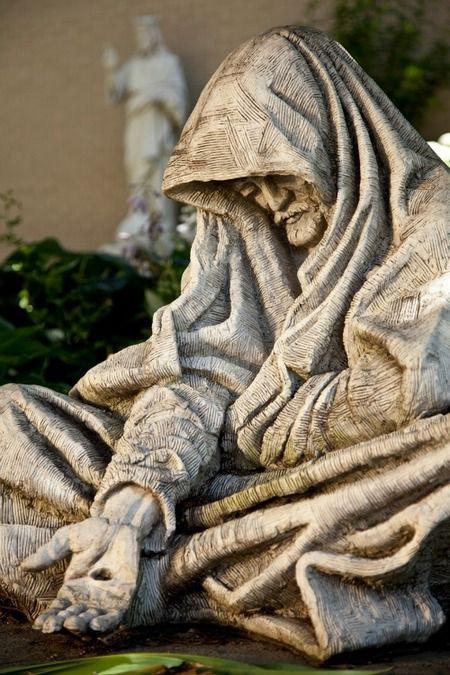
Follow almsgiving before all things.
The Rule of Saint Columba
#Christianity#Catholicism#Celtic Catholicism#charity#daridranarayan#statue#Jesus Christ#Saint Columba
12 notes
·
View notes
Text
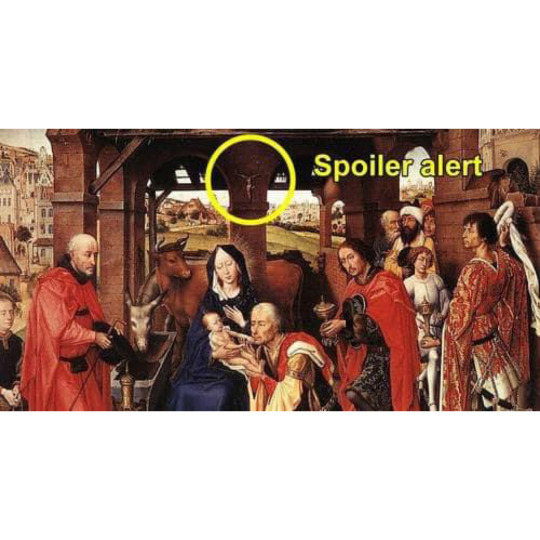
🖼️😝
#fine art#art#meme#Jesus#Rogier van der Weyden#Saint Columba Altarpiece#spoiler alert#spoiler#crucifix#adoration of the magi
0 notes
Photo

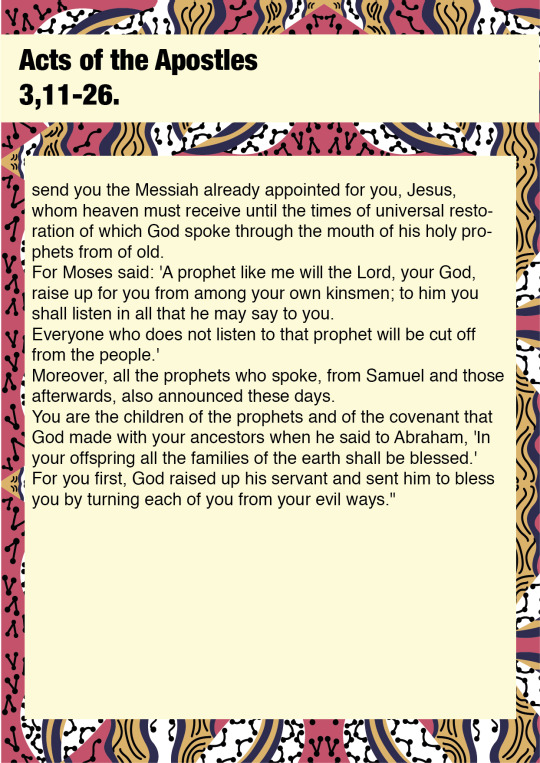
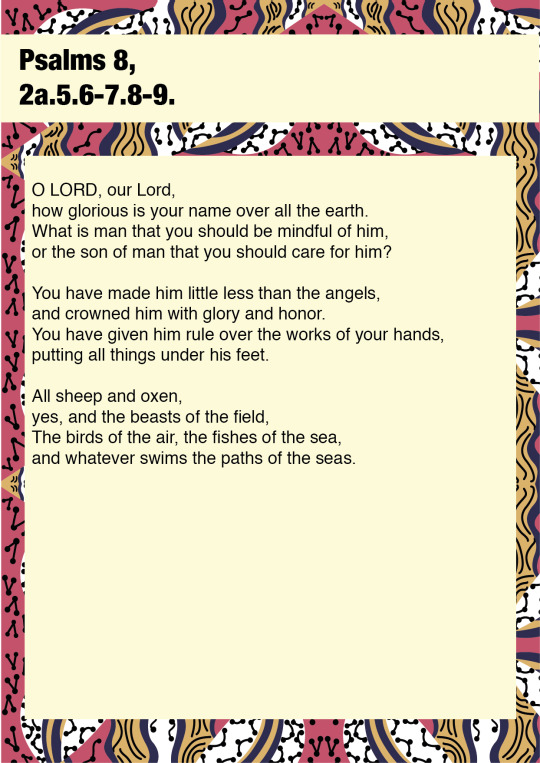
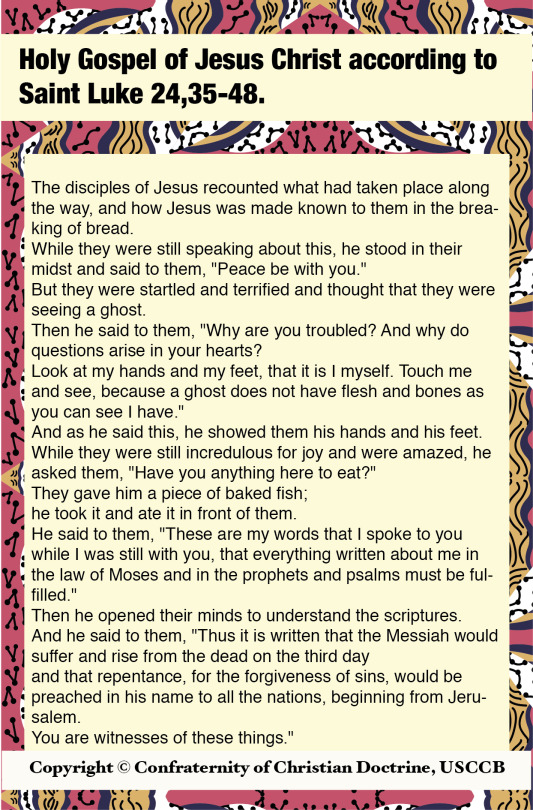

Readings for 13 APRIL
13/4/2023
#Acts of the Apostles 3#Acts of the Apostles#Psalms 8#Psalms#Holy Gospel of Jesus Christ according to Saint Luke 24#Holy Gospel of Jesus Christ according to Saint Luke#Blessed Columba Marmion (1858-1923)#He opened their intelligence to understand the scriptures#God#Lord#Jesus#Holy Spirit#love#hope#heaven#life#peace
1 note
·
View note
Photo

Happy Feast Day
Saint Columba
521-597
Feast day: June 9
Patronage: Ireland, Scotland, Derry, bookbinders, poets, floods
Saint Columba was born in Ireland of royal descent. He studied for the priesthood under many prominent churchmen, including St. Finnian, eventually becoming abbot. In 563, he sailed to Scotland evangelizing the pagans and establishing monasteries, including the abbey on Iona. Saint Columba is considered one of Irelands 12 Apostles loved by both the Irish and Scots.
{website}
46 notes
·
View notes
Text
The enduring legend of the Loch Ness Monster
How did the Loch Ness Monster myth, a relatively recent phenomenon, ever gain traction? It's a curious tale!
In the rugged highlands of Scotland there’s a large freshwater lake known as Loch Ness. It stretches for 23 miles flanked by rolling hills. And its depth reaches nearly 800 feet. The reason you’ve probably heard of Loch Ness isn’t because of the dimensions but what allegedly lies beneath its murky surface. According to multiple eyewitnesses, the lake is home to some type of prehistoric animal.…

View On WordPress
#1933#Columba#dinosaur#history#Loch Ness#Loch Ness Monster#mystery#Nicholas Witchell#Peter Scott#saint#Whopper
0 notes